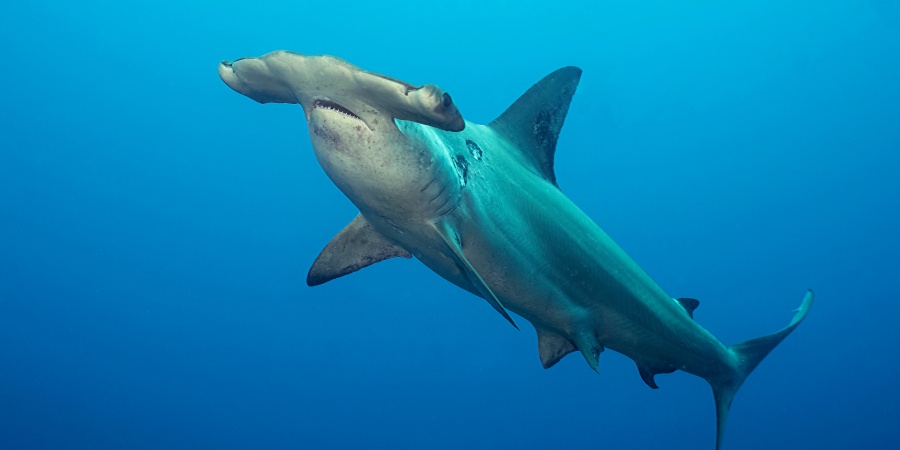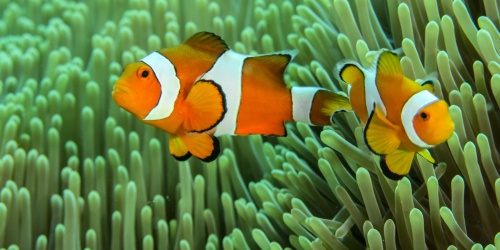
Hammerhead Shark - Photo Janos / Adobe
What is a hammerhead shark? Three species of hammerhead shark are found in north-western Australia but only one, the great hammerhead (Sphyrna mokarran), is considered dangerous. The scalloped hammerhead (Sphyrna lewini) and smooth hammerhead (Sphyrna zygaena) are quite timid and the similar-looking winghead shark (Eusphyra blochii) is considered harmless. Despite the fear they have traditionally engendered, these days, most divers who see a hammerhead shark regard it as a rare and exciting experience.
What do they look like? The unusual shape of the head means that hammerheads can scan a wide area with their eyes, which are positioned at the end of each wing. The great hammerhead grows to about six metres long, while the scalloped and smooth hammerheads reach little more than four metres.
Where are they found? Hammerheads are found in tropical and temperate seas throughout the world, in both coastal and offshore waters. The smooth hammerhead is found around the entire coast of WA, but the great hammerhead and scalloped hammerhead are rarely seen south of the Houtman Abrolhos Islands. The Montebello Islands Marine Park and the Rowley Shoals Marine Park are great places to see them.
Behaviour: Hammerheads are sociable creatures and in some areas they swim in packs of between 10 and 20. In south-eastern Australia they have been reported in groups of up to 200.
Threats: Sharks often have more to fear from people than we do from them, as they are extensively captured and eaten for food. More work needs to be done on their conservation status in Western Australia, as not enough is known about these species to say whether they are threatened. Some other large shark species are listed as threatened, and greater protection for more shark species may be needed.
Breeding and caring for young: Hammerheads commonly produce litters of up to 40 pups, born with the 'wings' on their head folded back.
Precautions: Don’t spearfish within their habitat or clean fish around swimming areas. They are less likely to attack people in groups of two or more. Swimmers and divers are also advised not to thrash around in the water, urinate in the water or swim with bleeding wounds. If a dangerous shark is seen, abandon any caught fish and immediately leave the area without making any jerky movements.
How you can protect hammerhead sharks: Don't buy souvenirs like shark teeth or jaws. Buy a picture or poster of your favourite shark instead!



























